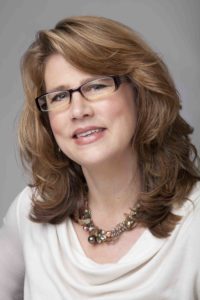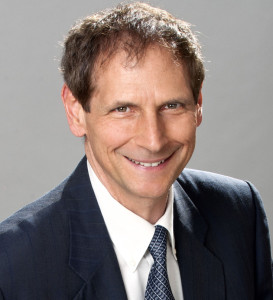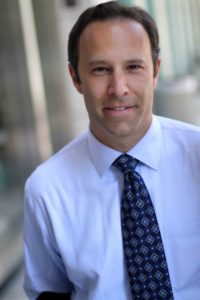The 2018 SAFE® International Conference is being held on Friday, September 7,2018 and Friday, October 19, 2018. The focus on this year’s conference running a forensic examination business and technology of forensic document examination.
Our speakers come from several disciplines, including forensic document examination.
Register for the conference.
Speakers for the September 7 Session
Ken May – You’ve Been Hacked and Don’t Know It
www.swiftchipinc.com
Abstract:
Cyber threats are everywhere these days! In this presentation you will learn about the current threat landscape, where the threats are coming from, and who is actually profiting from these attacks. It’s not all doom and gloom however, you’ll also learn multiple techniques to protect yourself and your client’s information from harm.
Bio:
Ken May is a Certified Ethical Hacker, Information Security and Compliance Auditor, Network Penetration Tester, CEO, and owner of Swift Chip, a Managed IT Services provider, based in Southern California.
He’s been a resident of Ventura since 1999, is married to his wife Debbie, and has 3 daughters and a son.
He has a Master’s Degree from SBCOM, a Bachelor’s in Liberal Arts from Thomas Aquinas College and has written 3 books and numerous articles. He has been Voted Top Channel Influencer of the SMBnation 150, and carries numerous certifications from HP, Microsoft, Cisco, SANS, Symantec, Dell and more. Recently, he was chosen by his peers to be elected to the CompTIA Managed IT Services Community Executive Council, where he will directly influence the education and guidance of their international IT community. Ken has been selected to participate in the SANS Instructor program, teaching cybersecurity certification prep classes. Ken is also a Commissioner for the City of Ventura, CA, where he works to help promote the Arts in his community.
He enjoys music, martial arts, movies and SCUBA diving.
Mr. May strongly believes that it is important to be actively involved in the community, and that one should always try to keep the ‘Big Picture’ and long term goals in mind when solving immediate-need issues, whether it be in business, community or one’s personal life.
Ann Mahony, CDE – When is a Scan not a Scan but a Scam?
http://forgerysleuth.com/
Abstract:
Like it or not, the world is now digital. Entertainment is streamed to hand-held devices; third world entrepreneurs conduct business globally from smart phones. Documents are scanned and stored in the cloud. Electronic documents are viewed as safe, secure, easily accessible, and most importantly – cost effective – in the realms of government, finance, health care, education, real estate, corporate business, and more. A document examiner’s request for “originals” is becoming more problematic, as the only saved images are often electronic. How can you determine if a scanned signature is a cut & paste or sourced from an original genuine document? Can you discern a scan of a scan? Discover what to look for, what to consider, and how to deal with documents in today’s fast-paced cyber world.
Bio:
Known as the Forgery Sleuth, Ann has been court-qualified and board-certified since 1982 and testified in Federal and Superior Court as an expert on forgery and fraud. Clients include Bank of America, Federal Express, Coldwell Banker, Chicago Title, State Farm, Kaiser Permanente and others. She has provided training for the State Bar of California, State Bar of Illinois, California Association of Police Training, Northern California Fraud Investigators, Safeway Stores, Pacific Bell to name a few. Ann has a B.S. degree from the University of Cincinnati and a Certificate in Marketing from UC Berkeley.
Jim Braford and Doug Cobb – The Hidden Secrets Within Paper – The Link Between Paper Making and Document Examination
www.paperforensics.com
Abstract
Document Examiners often run into situations where they need to determine if a specific sheet of paper is original to the document; or if it was inserted or substituted a later time. The answer may be within the paper itself. Paper Forensics will provide insight into the secrets hidden within the sheet of paper. Our topics will be the different kinds of paper, how to identify them and how to look for anomaly paper patterns of fraudulent documents.
Bios for Jim and Doug are at https://www.paperforensics.com/cvs
Mike Wakshull – Using the Zarbeco Filter Wheel and Photoshop to read beneath scribbles
https://quality9.com
Abstract:
Well-established techniques were differentiating inks are use of infrared and LAB color with split channels in Photoshop. These techniques do not always provide the desired results. In this presentation you will learn a technique using the filter wheel and MiScope to image the scribbled writing followed by Photoshop techniques to enhance the image to see below the scribbles. Results from a real case are presented.
There are also times when writing that is been obscured with an opaque sticker must be read. This presentation will also show a technique for seeing the writing below opaque sticker.
Bio:
Mike is a court-qualified forensic document examiner located in Temecula, CA. He is vice president of SAFE and a past president of Forensic Expert Witness Association San Diego Chapter. He has qualified as an expert witness in California Superior Courts and Federal District Court. Mike is a member of the National Speakers Association and has presented Legal and forensics conferences and chapter meetings. He has authored two books on the topic of forensic document examination and has worked cases from 19 different states. He also has 30 years of experience developing and managing computer software systems. Mike holds a graduate school certificate in forensic document examination from the Graduate School of Criminal Justice at East Tennessee State University and he has done extensive research on the effects of courtroom bias on the legal profession and expert witnesses.
Speakers for the October 19 Session
Conference start time: 9:00 a.m. Pacific Time, 12:00 p.m. Eastern Time, 16:00 GMT
Time: 9:00 a.m Pacific Time, 12:00 p.m. Eastern Time 16:00 GMT
Jim Braford and Doug Cobb – The Hidden Secrets Within Paper – The paper converting process and what identifying process markings (forensic clues) that happen during that process.
www.paperforensics.com
Abstract
Paper Forensics will present the second in our series of the Three Paper Forensics’ Landscapes, “Cutting the Paper”. We will concentrate on the cutting or converting of paper from the large parent rolls into copy and printing papers. We will show and explain the cutting, wrapping and packaging processes. You will learn terms like “clips of paper”, “cutting slitters”, “cut quality”, “tension tears or dog ears”, and how to identify these marks on the sheet of paper. We will then explain how to tie-in the forensic connection to paper anomalies that happen during the converting process and how they relate to your document examination.
Bios for Jim and Doug are at https://www.paperforensics.com/cvs
Time: 10:40 a.m Pacific Time, 13:40 (1:40 p.m.) Eastern Time, 17:40 GMT
Sean Poinst, Esq. and Harold Justman, Esq. – How to Keep their expert in and their expert out
Abstract: Starting with the expert report and taking you right up through motions in limine, this program covers federal and state expert disclosure, exchange and report requirements as well as litiga-tion tactics at each stage in the process. The program will cover a lot of ground, with particular emphasis on how to organize the expert’s methodology, data, opinions and report into sound conclusions, using, among other methods, a syllogistic approach to formulating and dissecting expert opinions. The speakers will cover the seminal Daubert/Sargon decisions and discuss how to attack and how to defend an expert’s report and opinions.
Bio: Harold A. Justman
Mr. Justman graduated from Stanford University in 1972, and he graduated from Hastings College of the Law in 1975. He was a real estate attorney from 1976 to 2012. He was also an Adjunct Professor of Real Estate at Menlo College in Atherton from 2013 to 2016.
Mr. Justman is a licensed California Real Estate Broker. In 1979 he began serving as an expert witness. He has qualified as a trial expert witness regarding the standard of care of real estate brokers and other real property matters in the counties of Alameda, Marin, Merced, Contra Costa, Shasta, Santa Cruz, Fresno, Placer, Santa Barbara, Santa Clara, San Diego, San Mateo, San Francisco, San Joaquin and Sonoma. Also, he has been qualified to testify in court as an expert witness in the United States District Court, Northern District of California.
Mr. Justman has also co-authored the following articles: “Foreclosure Law in California”, California Real Property Journal, volume 31, no. 4 (2013); “Loan Modification Law in
California”, California Real Property Journal, volume 32, no. 2 (2014); “The Co-Evolution of the Mortgage Market and Mortgage Law”, California Real Property Journal, volume 33, no. 1 (2015); and “An Economic Interpretation of the Yvanova v. New Century Mortgage Corporation Decision”, California Real Property Journal, volume 34, no. 2 (2016).
Sean Ponist is the founder of the Ponist Law Group, a firm specializing in real estate, construction defect and business litigation. Prior to founding his own firm, Mr. Ponist was a prosecutor with the Marin County District Attorney’s Office and in-house counsel for Marcus & Millichap Real Estate Investment Brokerage Company. He has successfully tried over 30 cases to verdict.
In acknowledgment of his accomplishments, he has been recognized as a “Super Lawyer,” a distinction awarded to less than 5% of attorneys, for the past seven years (2011-2017). He is also a fellow of the Litigation Counsel of America, a trial lawyer honorary society whose membership is limited to less than one-half of 1% percent of North American lawyers, judges and scholars. He has also been recognized as one of the Best of the Bar by the San Diego Business Journal.
Mr. Ponist has published numerous articles on real estate topics, including recent articles in The Daily Journal (“Recovering Lost Profits in Real Estate Transactions” and “Should Equitable Indemnity Apply Against Negligent Misrepresentation Claims?”), California Lawyer magazine (“The Nonrefundable Deposit – Not!”) and Commercial Investment Real Estate (“Going to the Source: Minimize your liability by providing attributions”).
He has further lectured for the San Diego County Bar Association (“Deconstructing Commercial Leases” and “Commercial Real Estate Brokerage Standard of Care”), San Francisco Bar Association (“Bringing Down the House: Assessing Damages in Real Estate Cases,” “Best Use of Experts in Real Estate Cases,” “The Rogue Agent: Agency Issues In Real Estate,” “Private Investigation and the Legal Community,” and “Commercial Real Estate Brokerage Standard of Care,” and “Contract Interpretation”), the San Mateo County Bar Association (“When Real Estate Deals Go Bad,” “Expert Witnesses at Trial,” and the “Agent-Principal Relationship”) as well as for the National Business Institute (“Direct and Cross-Examination for Civil Litigators”).
Mr. Ponist graduated from UC Davis School of Law, receiving his Juris Doctor degree in 1999. Prior to law school, Mr. Ponist attended UCLA where he earned a Bachelor of Arts in Philosophy in 1995 and was a Departmental Scholar.
Time: 13:00 (1:00 p.m.) Pacific Time, 15:00 (3:00 p.m) Eastern Time, 23:00 GMT
 Kristin Baldwin – Social Media for Expert Witnesses
Kristin Baldwin – Social Media for Expert Witnesses
Abstract
Social media is a great way to build a personal brand and create deeper, more meaningful conversations with clients but it also has ethical traps and no clear road map. We will walk through the various social media platforms, build a social media plan and work on your own online personal brand. A discussion of social media ethics is included and you will walk away from this program with a road map for your next steps.
Bio
Kristin Baldwin has over 20 years of experience in the legal marketing arena, ranging from continuing legal education director, director of business development and an executive director of a specialty bar association. My marketing career was launched with my first job in graduate school, selling prisons to small communities around the state of California. She is currently the forensic business development manager for JENSEN HUGHES and also continues to run her own business, the Baldwin Network, helping associations market themselves more effectively through direct mail, social media and other marketing avenues.
Time 14:10 Pacific Time 17:10 Eastern Time 00:10 GMT
 Mike Wakshull – Photoshop Techniques for document examiners
Mike Wakshull – Photoshop Techniques for document examiners
Abstract
Over the years, document examiners have asked me how to use Photoshop to create exhibits and compare signatures. This presentation offers an introduction to techniques to perform analysis of questioned documents. This presentation uses Photoshop 2017 CC. This is the latest version of Photoshop offered through the Adobe Creative Cloud subscription. Techniques demonstrated include:
- Overlay one signature onto another
- Overlay a document onto another document
- Change the color of an image
- Differentiating inks on a document
- Extract a portion of the document, such as a signature, and place it on to another page
- Reading a PDF file into Photoshop
This is a demonstration rather than a tutorial. Attendees can watch the presentation at a future date to practice and learn the techniques.
Bio:
Mike is a court-qualified forensic document examiner located in Temecula, CA. He is vice president of SAFE and a past president of Forensic Expert Witness Association San Diego Chapter. He has qualified as an expert witness in California Superior Courts and Federal District Court. Mike is a member of the National Speakers Association and has presented Legal and forensics conferences and chapter meetings. He has authored two books on the topic of forensic document examination and has worked cases from 19 different states. He also has 30 years of experience developing and managing computer software systems. Mike holds a graduate school certificate in forensic document examination from the Graduate School of Criminal Justice at East Tennessee State University and he has done extensive research on the effects of courtroom bias on the legal profession and expert witnesses.

